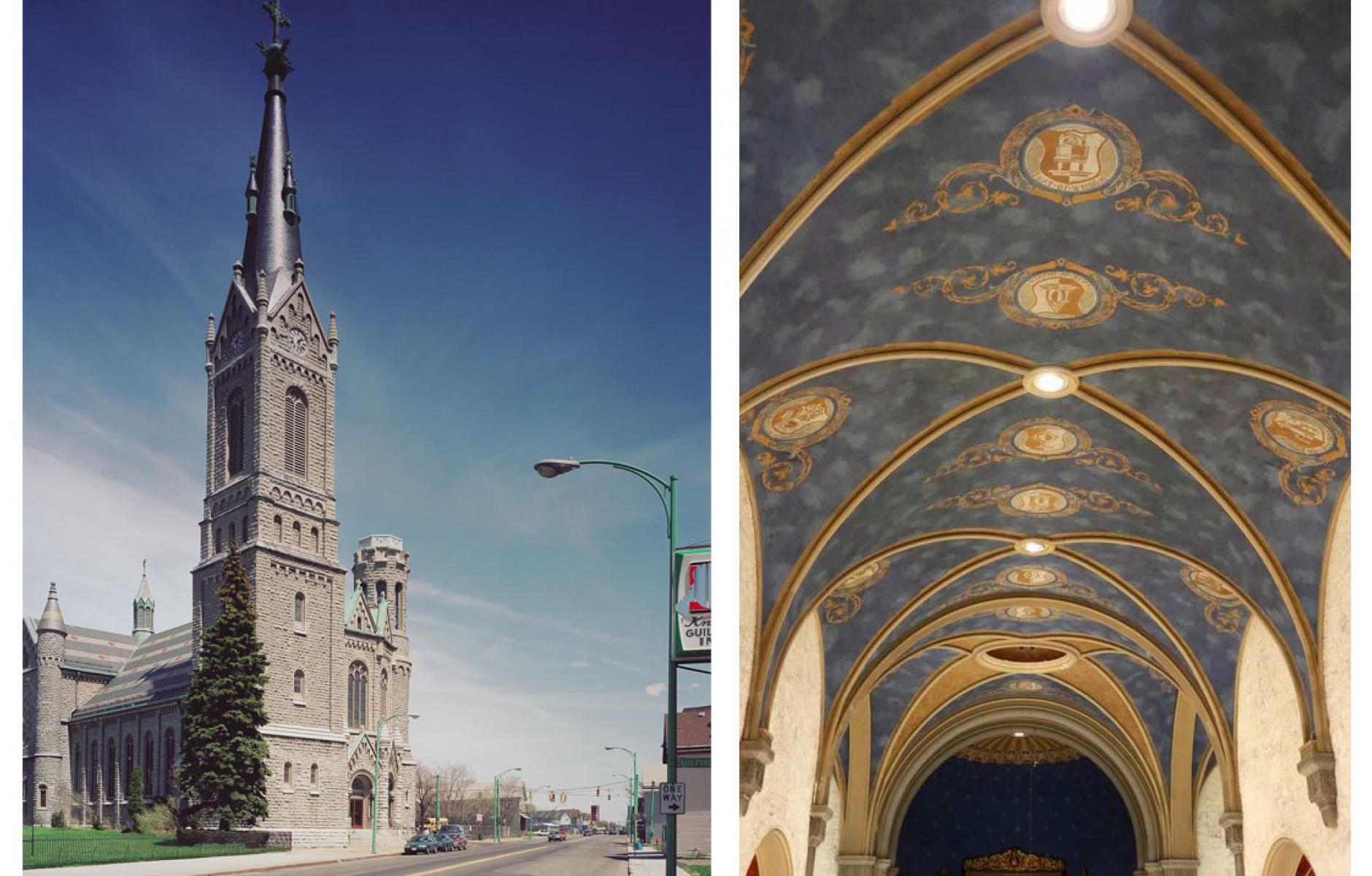
Tsunami of church closings poses crisis and opportunity
Note: Public Square has reported on the trend of underutilized and vacant historic church sites and creative new urban design responses. Richard Reinhard, who previously served as chief of staff to the mayor of Buffalo, wrote this piece in The Buffalo News following the Catholic Diocese of Buffalo’s announcement of 89 church closings throughout the region. A similar situation exists in cities large and small across the US, which calls for a response from urban designers.
A tsunami of empty houses of worship is washing across the U.S., from denomination to denomination and coast to coast.
The tidal wave hit Western New York with great force this month, with the Catholic Diocese of Buffalo’s announcement of the closing of approximately half of the diocese’s churches in the eight-county area, creating 89 potential spiritual brownfields.
How did this happen? A perfect storm. First, younger generations are no longer attending services. A 2021 Gallup poll of Americans showed that church membership in the U.S. plummeted from 70 percent to 47 percent over one generation. Second, real estate operating costs have risen, especially for utilities, insurance and construction.
Third, transportation mobility and internet connectivity have created a different world than when most of the churches were built. Easy transportation – cars or public transit – means that neighborhood houses of worship compete regionally; the internet means that they compete globally.
Finally, Covid-19 threw its giant monkey wrench into the works.
The vice president of research and planning of the National Council of Churches estimates that 100,000 U.S. churches will be closed over the next several years – an estimated one-quarter of those in operation.
Many Western New York Catholics are adamant that the diocese’s decision should be reversed, but to operate a church building costs an estimated $7-10 per square foot per year, so a modest 10,000-square-foot property runs up a $70-100,000 tab. Small gatherings of congregants in their 70s, 80s and 90s cannot afford operating the building, never mind staff salaries, equipment, supplies and neighborhood missions. Many house-of-worship leaders nationally have confided that they are one new roof (or boiler or asbestos removal) away from closing.
The Great Mismatch – small, aging congregations meeting in large, deteriorating churches – means that the Catholic Diocese of Buffalo had no choice but to close churches. The rub is how it chose to do this. The diocese:
Could have closed them one or two per year over the past two or three decades but chose to repeatedly “kick the can down the road” until – as the diocese faced a mountain of lawsuits involving clergy sexual abuse – a U.S. Bankruptcy Court forced it to act.
Could have been transparent with the community about how it determined which churches to close but chose to be secretive, much like the Vatican in a Dan Brown mystery.
Could have reached out to the rest of the community to set reuse and redevelopment strategies but chose instead to go it alone and thrust problems onto individual municipalities and neighborhoods.
The same Great Mismatch has been eroding dozens of houses of worship of other religions and denominations in Western New York as well, but because their presence is less pervasive, their organizational structures more “bottom-up,” and decision-making less furtive, community outrage is muted.
Across the U.S. and Canada and beyond, many faith properties have been transformed into new, exciting uses, some with the house of worship intact but downsized. St. Jax Centre in Downtown Montreal houses an Anglican church, a circus and circus school, two immigrant-serving not-for-profits, and two other congregations. The Village at West Jefferson in Louisville built an adjacent 30,000 square feet of new development, including a bank branch, restaurant and other businesses in a formerly neglected neighborhood around a United Church of Christ.
Emory Beacon of Light in Washington, D.C., constructed 99 affordable housing units, a culinary institute and places for small businesses, around a United Methodist Church.
Buffalo has a few examples of good church reuse and redevelopment: Ani DiFranco’s Babeville on Delaware Avenue, the Martin Luther King Urban Life Center with adaptive reuse designed by HHL, the Lafayette Lofts on Lafayette Avenue and soon Mt. Olive Senior Manor on East Delavan Avenue, are all good examples of church properties developed into community assets. Delta Development, an offshoot of the diocese, has redeveloped a number of church properties throughout Western New York.
The latest trend across America is to turn surplus faith properties into affordable housing. Frustrated by local NIMBYs (“not in my backyard” advocates), the state of California passed
legislation last year giving serious incentives to religious groups to develop affordable housing, even if neighbors object. Maryland, Virginia and New York are reviewing the same.
The Episcopal bishop of Indianapolis, a Cornell University urban planning graduate, was awarded a $1 million grant from Lilly Endowment to examine 82 statewide churches for how they could better employ their real estate to connect to the community.
While these initiatives differ, with a variety of end uses, several attributes are in common: They required planning, focus, champions, public money (a lot of it), hard work (for years) – and leadership. Those involved didn’t expect reluctant, embattled, secretive faith institutions to deliver ready-made solutions. They mobilized.
In my advice to the Urban Land Institute, the Canadian Urban Institute and Virginia Diocesan Homes about the reuse and redevelopment of houses of worship, I have been emphasizing the need for a 360-degree analysis of each faith property – taking into account the property, the congregation, the neighborhood and the resources.
There are complicating factors in Western New York: The real estate markets at many locations are sluggish at best; maybe one-third of the closed churches are in high-demand locations, one-third in moderate-demand and one-third in low-demand. Public money is limited, though attainable. Sanctuaries, especially those built before the 1950s and ‘60s, are difficult to readapt and problematic to demolish. Decisions on property disposition will be scrutinized by the U.S. Bankruptcy Court, so donating or discounting empty churches to immigrant faith groups could make community sense but may be prohibited.
In 1999, I was charged by Mayor Tony Masiello to conceptualize what became Buffalo Niagara Medical Campus. The initial phases of BNMC required full participation of the main medical players; the city, county and state; the surrounding neighborhoods; and a generous John R. Oishei Foundation. Together we learned from national medical centers and innovation district models from across the U.S. and Canada.
The reuse and redevelopment of 89 houses of worship – probably more like 120 or 140 when one adds other religions and denominations – requires a massive and strategic initiative like BNMC.
Faith properties, after all, are not only where people gather to worship, but also where the less fortunate access human services. They serve as community icons; witness the church spires on city, town and village postcards. They provide memories of the most important ceremonies of our lives.
Given the issue's huge scope and the thorny impediments to success, Western New York organizations—governments, business groups, community development corporations, and foundations—need to recognize church closures for the crisis they are.




